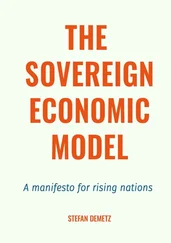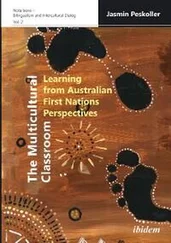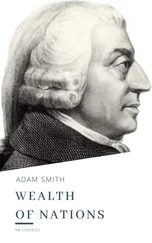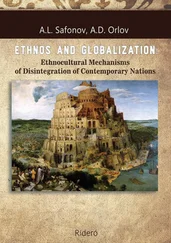After 1688 Parliament began to improve the ability to raise revenue through taxation, a development well illustrated by the excise tax bureaucracy, which expanded rapidly from 1,211 people in 1690 to 4,800 by 1780. Excise tax inspectors were stationed throughout the country, supervised by collectors who engaged in tours of inspection to measure and check the amount of bread, beer, and other goods subject to the excise tax. The extent of this operation is illustrated by the reconstruction of the excise rounds of Supervisor George Cowperthwaite by the historian John Brewer. Between June 12 and July 5, 1710, Supervisor Cowperthwaite traveled 290 miles in the Richmond district of Yorkshire. During this period he visited 263 victualers, 71 maltsters, 20 chandlers, and one common brewer. In all, he took 81 different measurements of production and checked the work of 9 different excisemen who worked for him. Eight years later we find him working just as hard, but now in the Wakefield district, in a different part of Yorkshire. In Wakefield, he traveled more than nineteen miles a day on average and worked six days a week, normally inspecting four or five premises. On his day off, Sunday, he made up his books, so we have a complete record of his activities. Indeed, the excise tax system had very elaborate record keeping. Officers kept three different types of records, all of which were supposed to match one another, and any tampering with these records was a serious offense. This remarkable level of state supervision of society exceeds what the governments of most poor countries can achieve today, and this in 1710. Also significantly, after 1688 the state began to rely more on talent and less on political appointees, and developed a powerful infrastructure to run the country.
THE INDUSTRIAL REVOLUTION
The Industrial Revolution was manifested in every aspect of the English economy. There were major improvements in transportation, metallurgy, and steam power. But the most significant area of innovation was the mechanization of textile production and the development of factories to produce these manufactured textiles. This dynamic process was unleashed by the institutional changes that flowed from the Glorious Revolution. This was not just about the abolition of domestic monopolies, which had been achieved by 1640, or about different taxes or access to finance. It was about a fundamental reorganization of economic institutions in favor of innovators and entrepreneurs, based on the emergence of more secure and efficient property rights.
Improvements in the security and efficiency of property rights, for example, played a central role in the “transportation revolution,” paving the way for the Industrial Revolution. Investment in canals and roads, the so-called turnpikes, massively increased after 1688. These investments, by reducing the costs of transportation, helped to create an important prerequisite for the Industrial Revolution. Prior to 1688, investment in such infrastructure had been impeded by arbitrary acts by the Stuart kings. The change in the situation after 1688 is vividly illustrated by the case of the river Salwerpe, in Worcestershire, England. In 1662 Parliament passed an act to encourage investment to make the Salwerpe navigable, and the Baldwyn family invested £6,000 to this end. In return they got the right to charge people for navigation on the river. In 1693 a bill was introduced to Parliament to transfer the rights to charge for navigation to the Earl of Shrewsbury and Lord Coventry. This act was challenged by Sir Timothy Baldwyn, who immediately submitted a petition to Parliament claiming that the proposed bill was essentially expropriating his father, who had already heavily invested in the river in anticipation of the charges he could then levy. Baldwyn argued that “the new act tends to make void the said act, and to take away all the works and materials done in pursuance thereof.” Reallocation of rights such as this was exactly the sort of thing done by Stuart monarchs. Baldwyn noted, “[I]t is of dangerous consequence to take away any person’s right, purchased under an act of Parliament, without their consent.” In the event, the new act failed, and Baldwyn’s rights were upheld. Property rights were much more secure after 1688, partly because securing them was consistent with the interests of Parliament and partly because pluralistic institutions could be influenced by petitioning. We see here that after 1688 the political system became significantly more pluralistic and created a relatively level playing field within England.
Underlying the transportation revolution and, more generally, the reorganization of land that took place in the eighteenth century were parliamentary acts that changed the nature of property ownership. Until 1688 there was even the legal fiction that all the land in England was ultimately owned by the Crown, a direct legacy from the feudal organization of society. Many pieces of land were encumbered by numerous archaic forms of property rights and many cross-cutting claims. Much land was held in so-called equitable estates, which meant that the landowner could not mortgage, lease, or sell the land. Common land could often be used only for traditional uses. There were enormous impediments to using land in ways that would be economically desirable. Parliament began to change this, allowing groups of people to petition Parliament to simplify and reorganize property rights, alterations that were subsequently embodied into hundreds of acts of Parliament.
This reorganization of economic institutions also manifested itself in the emergence of an agenda to protect domestic textile production against foreign imports. Not surprisingly, parliamentarians and their constituents were not opposed to all entry barriers and monopolies. Those that would increase their own market and profits would be welcome. However, crucially, the pluralistic political institutions—the fact that Parliament represented, empowered, and listened to a broad segment of society—meant that these entry barriers would not choke other industrialists or completely shut out newcomers, as the Serrata did in Venice (this page–this page). The powerful woolen manufacturers soon made this discovery.
In 1688 some of the most significant imports into England were textiles from India, calicoes and muslins, which comprised about one-quarter of all textile imports. Also important were silks from China. Calicoes and silks were imported by the East India Company, which prior to 1688 enjoyed a government-sanctioned monopoly over the trade with Asia. But the monopoly and the political power of the East India Company was sustained through heavy bribes to James II. After 1688 the company was in a vulnerable position and soon under attack. This took the form of an intense war of petitions with traders hoping to trade in the Far East and India demanding that Parliament sanction competition for the East India Company, while the company responded with counterpetitions and offers to lend Parliament money. The company lost, and a new East India Company to compete with it was founded. But textile producers did not just want more competition in the trade to India. They wanted imports of cheap Indian textiles (calicoes) taxed or even banned. These producers faced strong competition from these cheap Indian imports. At this point the most important domestic manufacturers produced woolen textiles, but the producers of cotton cloths were becoming both more important economically and more powerful politically.
The wool industry mounted attempts to protect itself as early as the 1660s. It promoted the “Sumptuary Laws,” which, among other things, prohibited the wearing of lighter cloth. It also lobbied Parliament to pass legislation in 1666 and 1678 that would make it illegal for someone to be buried in anything other than a woolen shroud. Both measures protected the market for woolen goods and reduced the competition that English manufacturers faced from Asia. Nevertheless, in this period the East India Company was too strong to restrict imports of Asian textiles. The tide changed after 1688. Between 1696 and 1698, woolen manufacturers from East Anglia and the West Country allied with silk weavers from London, Canterbury, and the Levant Company to restrict imports. The silk importers from the Levant, even if they had recently lost their monopoly, wished to exclude Asian silks to create a niche for silks from the Ottoman Empire. This coalition started to present bills to Parliament to place restrictions on the wearing of Asian cottons and silks, and also restrictions on the dyeing and printing of Asian textiles in England. In response, in 1701, Parliament finally passed “an Act for the more effectual imploying the poor, by incouraging the manufactures of this kingdom.” From September 1701, it decreed: “All wrought silks, bengals and stuffs, mixed with silk of herba, of the manufacture of Persia, China, or East-India, all Calicoes painted, dyed, printed, or stained there, which are or shall be imported into this kingdom, shall not be worn.”
Читать дальше












